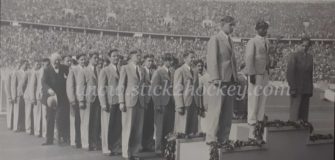ARJUNA AWARD: GENDER DISPARITY IS OMINOUS
Share
Up until 2018, 85 deserving hockey players have been bestowed the Arjuna honour. The nation salutes their achievement in unison. There is no second opinion on that. Everyone deserves the nation’s honour.
True, there was always debate, actual or contrived, subtle or coarse, as to the selection process, suitability of the odd selection or omission. But this is beyond the scope of this work.
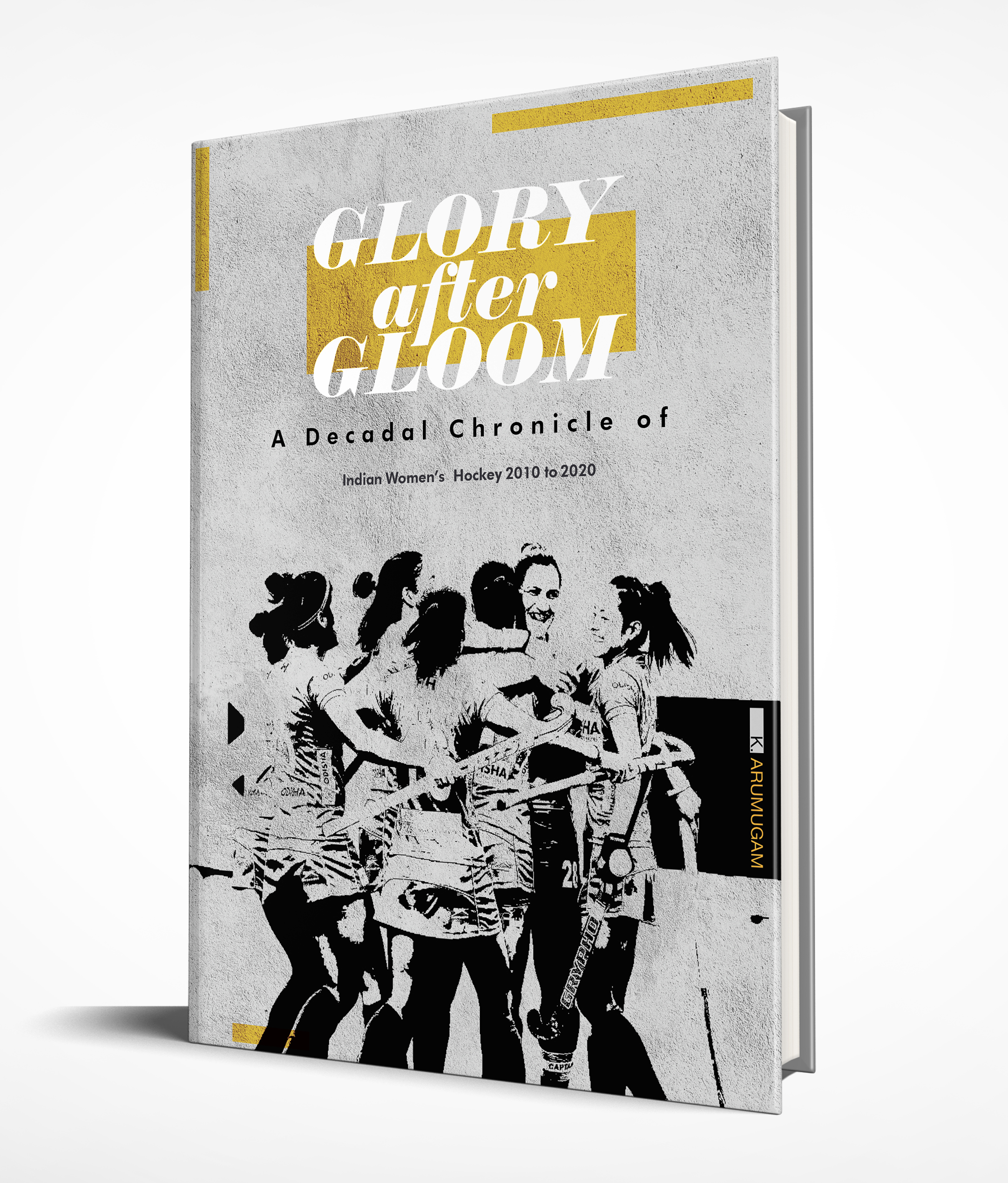
This article is the last chapter of Glory after Gloom book authored by K. Arumugam
However, we need to journey through these awards from the women’s perspective. An exercise to discern whether or not women players have got their due.
Of 85 players who were conferred the honour till May 2020, 23 are women – less than a third.
Women’s hockey was flourishing as much as men’s at the time of inception of the award. The women’s game had its own administration, had rights to selecting teams and conducting tournaments and enjoyed government patronage.
Women, however, played fewer tournaments than their male counterparts. It was plain to see why. The men had a bigger and larger platform such as the Olympics and Asian Games on which to perform and achieve laurels.
A level playing field, therefore, did not exist.
Even allowing for greater opportunities open to the men, it’s perplexing why women did not feature in the awards’ list for long spells often spanning a decade.
For instance, for 13 years between 1985 and 1997, more than a dozen hockey players received the Arjuna award but there was no women in the list. Ironically, this was a period during which the men’s team found itself in the wilderness.
The men had no Asian Games or Asia Cup gold medals in the cabinet. They even finished with the wooden spoon at the 1986 World Cup and subsequently missed the elitist Champions Trophy often during this period. The fall from grace did not prevent male players stepping up and receiving the prestigious award.

Deepika did not get the Arjuna Award, despite fully deserving
That could be attributed to several factors that went into the selection of players for the award. It included:
- The overall sports scenario of the nation,
- Individual excellence even in an otherwise gloomy scene,
- Weightage for sports’ heritage and motivation to uphold it by GenNext.
Sadly, those considerations, patronage or whatever, were not extended to the women. It was unfair to say the least.
The ladies team entered the 1998 Asian Games final to break the 13-year jinx of not a single women hockey player chosen for the award. Its captain Pritam Siwach was awarded the Arjuna. Which was all very well received. Pritam Siwach has applied for Dronocharya Award this year.
But a look at other leading women powers in Asia – South Korea, China and Japan – revealed the wide gap in fortunes. The above trio of nations bid for the Asian Games and Olympics and in its wake spent princely sums on teams which included women’s hockey to ensure a good performance at home.
The Indian eves did not enjoy the contextual advantage and it manifested itself in stiff competition in Asia itself. The big picture did not weigh in on the panel selecting awardees.
In five years between 1995 and 2000, as many as 20 male hockey players were chosen for the award, making it an average of four per year. During the same period, just three women were chosen for the Arjuna award (Pritam Siwach, Omana Kumari and Tingonleima Chanu).
Half of the male awardees were old guards who missed out in the past. But the ladies were denied such consideration.
Had women’s hockey been appreciated, the likes of Sanggai Ihembal Chanu, Sandeep Kaur, Manjinder Kaur and Deepika Murthy could have got their due in terms of the award.
To segregate former players from the present, a separate category called Life Time Achievement in the name of Dhyan Chand was created. Till date eight hockey players were given the honour but that group included just one woman Sumrai Tete.
There were other women players who merited keeping Sumrai company in the list and the names of Subhadra Pradhan and Kirandeep Kaur come to mind.
Let bygones be bygones.
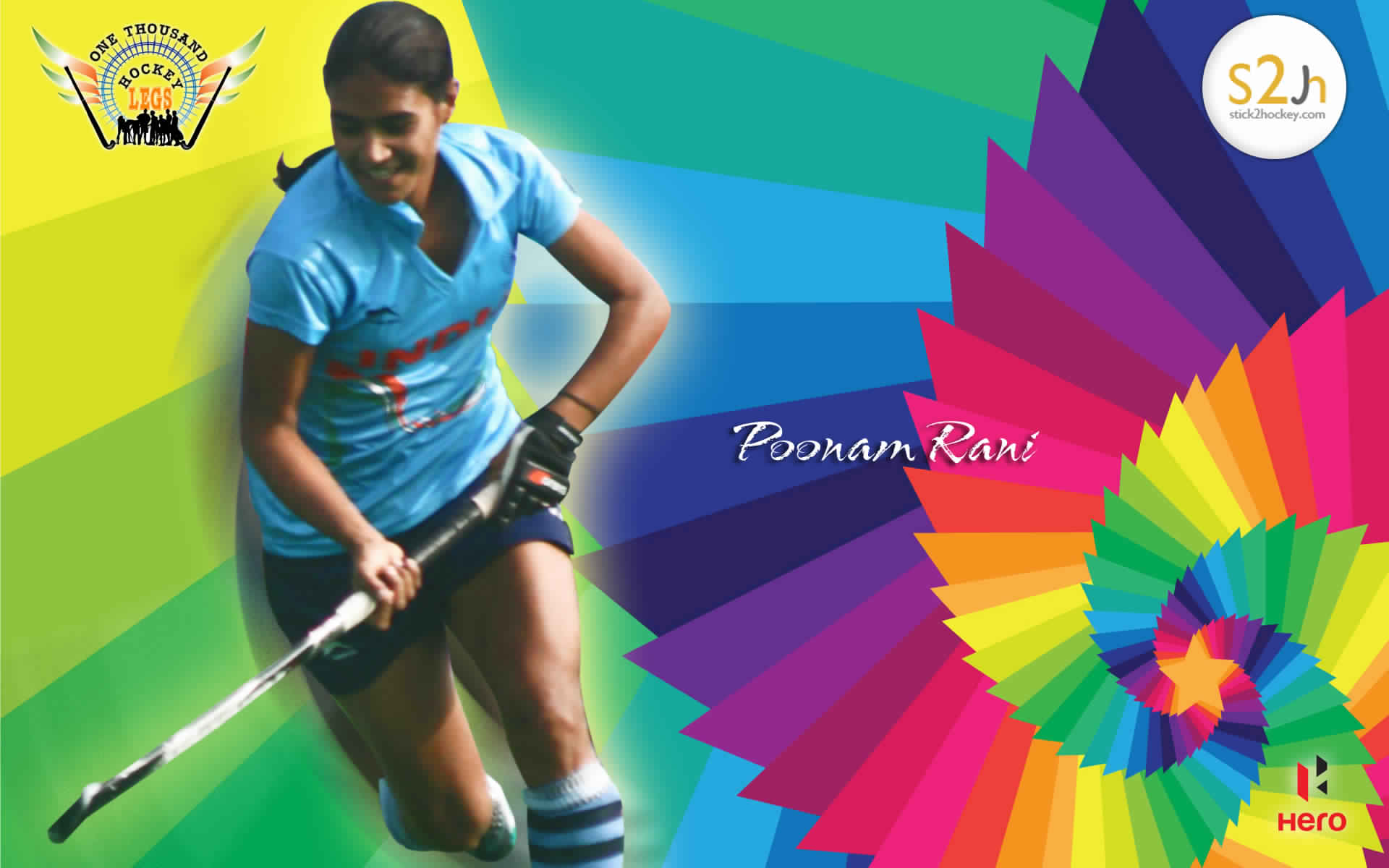
A old wallpaper of Poonam when she was in her prime
But was the situation any different in the decade being discussed?
The 10 years that have elapsed saw men’s and women’s hockey administered by a single entity. It meant parity in terms of government grants, access to platforms such as continental, invitational and bilateral events and positioning in the hockey world. Save the fact that very few tournaments were organized for the women at home, most other factors were evenly balanced for both genders.
As a result, the women’s team did duty around the year unlike the past. Their participation in international tournaments and bilateral matches increased. But they still lagged behind by at least one-third.
Both men’s and women’s hockey produced stars in the contemporary scene. There was more continuity in women’s team composition than men’s, resulting in long careers of a committed core of women. Doesn’t the Arjuna award exist to celebrate such extraordinary commitment and achievement by such elite athletes? Why then have there been some glaring cases of cruel omission?
Ritu Rani, a stand-out player, is one such.She donned India colours for 12 solid years, anchoring several victories. Ritu also captained India for six years including a record 22-plus tournaments and test series.
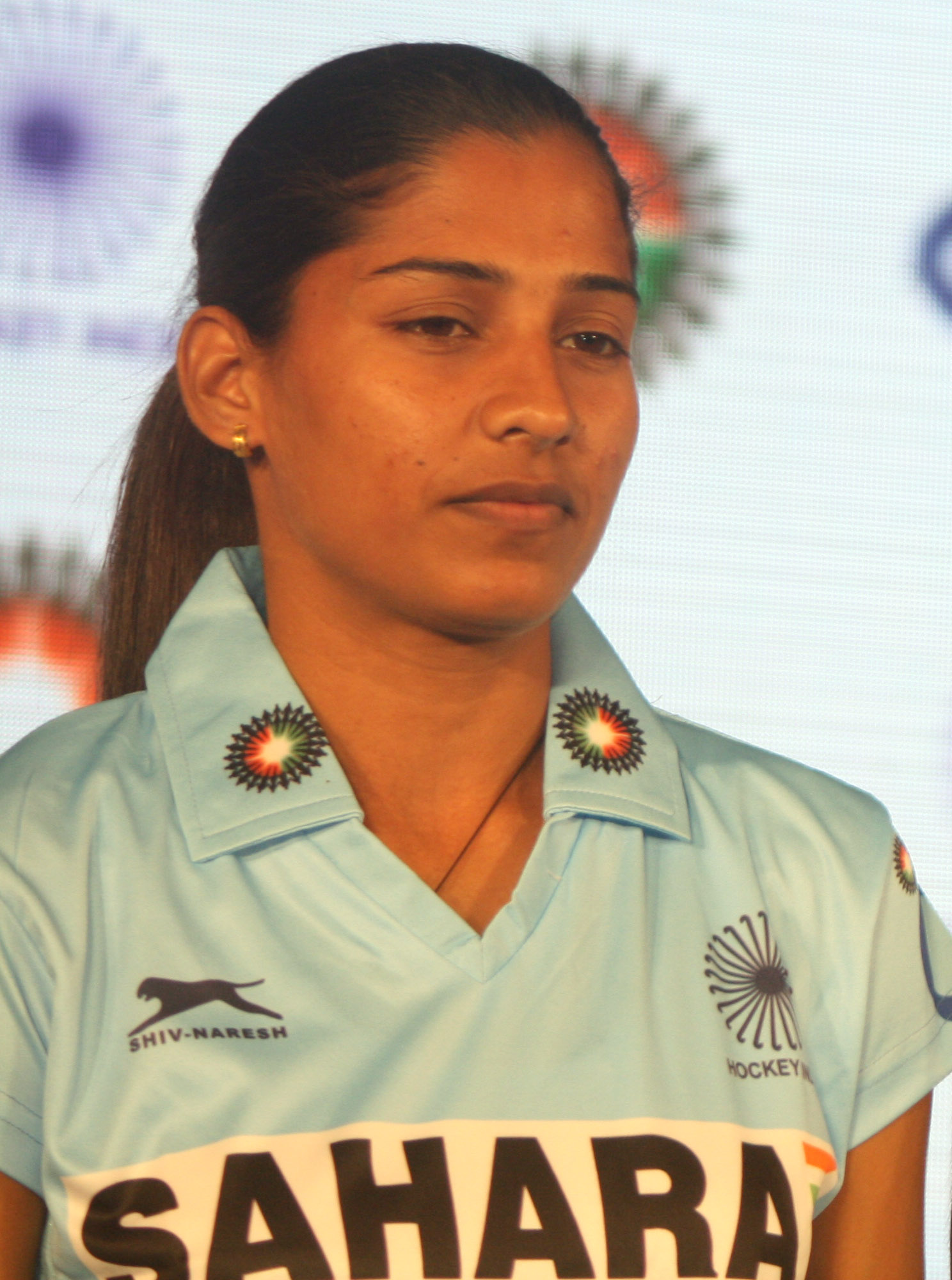
Former Indian captain Ritu Rani, a glaring miss out
Deepika Thakur is a classic case. Since making her international debut in 2004, she represented India a record 15 years till the end of 2018. In the process, she collected a record 230 India caps.
Poonam Rani, a forward, figured in 30 campaigns for India. An illustrious career that spanned 11 years during which she took injury-induced layoffs just three times. By the time she was forced to retire, she had collected 195 caps. She was rendered no compassion or consideration to enter the 200 Club for which she needed to play a mere five more matches.
Only the iconic Rani Rampal and the recent goalkeeping sensation Savita Punia were bestowed with the Arjuna. It was a moment to rejoice for women’s hockey but apprehensions continue in the disparity existing between the genders when it comes to the awards.
Deep Grace Ekka, like her compatriot Savita, collected her 200th cap in 2019. The 24-year-old has fire in the belly and can bid her time for the Arjuna. Vandana Katariya is two years older and debuted earlier than Ekka. She crossed the 200 milestone a year ago. She too awaits her moment. But here lies the catch.
A rough scrutiny of data reveals the stark reality between genders in the Indian hockey scene.
A men’s hockey player of the same continuity takes an average of just seven to eight years to cross the 200 milestone. A woman player takes 10-11 years, almost one third more, despite continuity arising from fewer tournament opportunities than their male counterparts. It is implicit therefore that women have to retain their places in the team longer, maintain fitness for years more, endure being away from homes longer and bear sporting anxiety and psychological stress that go with playing a sport at the highest level even more.
Ultimately, you perform similar feats that the men do, but in double the time because of the relative paucity of opportunity.
And, we are not talking about other cultural and societal disadvantages that the womenfolk encounter.
Men’s captain Manpreet Singh collected his 200th cap in only six years. He debuted in October 2011 and reached the above milestone in December 2017). His is a classic case, though other men took a year or more. Sardar Singh, Chinglen Singh Sana and Gurbaj Singh reached the 200th club in seven to eight years.
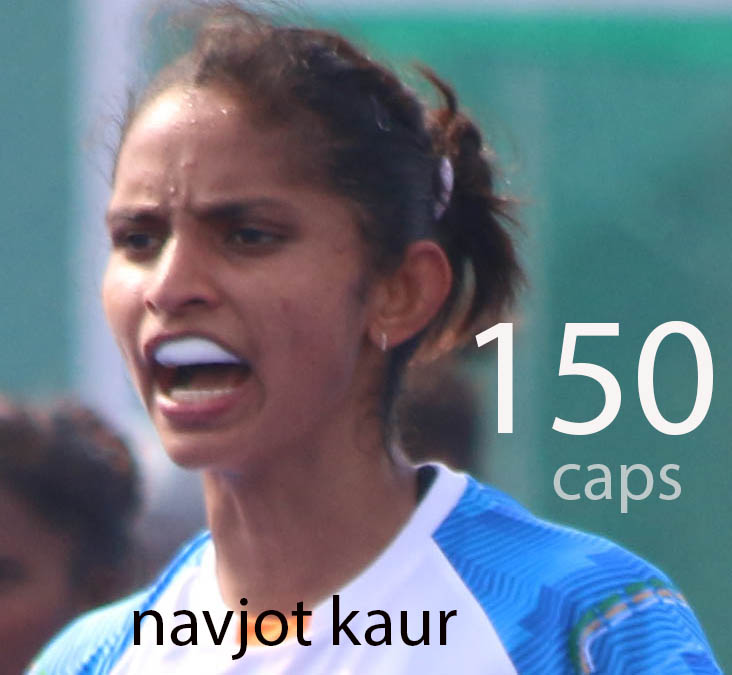
The likes of Lilima Minz, Navjot Kaur, Namita Toppo and Monika would have played 200 internationals had they got the opportunity to play the same number of tournaments, as say, Manpreet Singh or Chinglensana Singh. For a woman hockey player to achieve 200 caps, it takes almost half the time more the time, for some players even twice the time.
These players are hardly dropped or rested, but India itself plays fewer tournaments compared to men. Still, the eves have stood the test of time, endured long careers with commitment and focus on their way to 200 caps. Theirs was a commitment to the concept of hockey being a team sport.
To these indefatigable women warriors, came a feeling of victory if the team won. And that of defeat if it lost.
There was no shortage of commitment, effort or sacrifice. The women always gave it their all. Their endeavours may not have resulted in as many medals as the men’s team have won – partly stemming from the greater number of international tournaments they played.
Could that be the reason the women picked up fewer Arjuna awards than their male counterparts? Is this why the Deepikas, Ritus and Poonams are being denied the Arjuna award? Vandana Katariya and Deep Grace Ekka soldier on, however, their prospects of bagging the honour may come in a year or two, but as of now hang in balance.
Are we, as a society, fair to these exemplary athletes?
Excerpt from the book GLORY AFTER GLOOM: A Decadal Chronicle of Indian Women’s Hockey 2010 to 2020.

